It’s been a hectic week: 2 days at the Farm; 3 days at Fern Hill; 3 owling nights. It’s quite noticeable now that things are tailing off, especially at the school campuses. That being said, the Farm meadow is still quite busy with sparrows. The grass stems have all turned brown and brittle and today’s high winds caused them to rattle but sparrows were popping up in good numbers and either flying to the edge or dropping back into a spot. It’s astounding actually…..
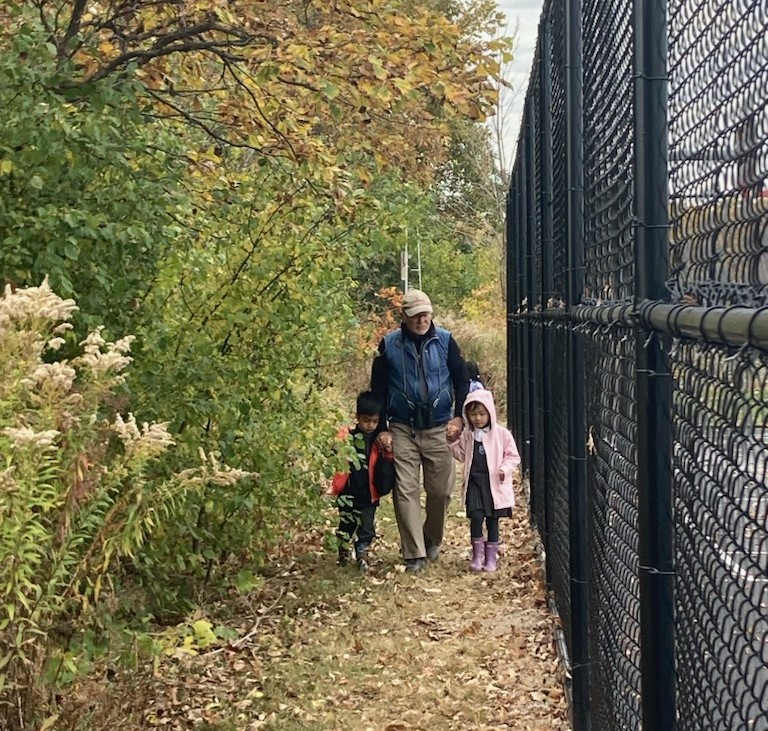
The school experience is very different than running a banding station. Not nearly so intense. The object is to familiarize students with the birds around them and the best way to do that (I’ve found) is to give them an opportunity to experience the birds up close. There’s nothing like holding and a releasing a bird to spur one’s interest with the result that one pays more attention to them. [Interestingly, some of the most interesting sightings this Fall have been pointed out to me by young students; e.g., a kettle of 200+ Broad-winged Hawks way off in the distance.] But all this takes time so we’re running just 5 nets at each campus situated in a shrubby corridor that facilitates bird movement. We also have a number of feeders to draw residents…and then others.
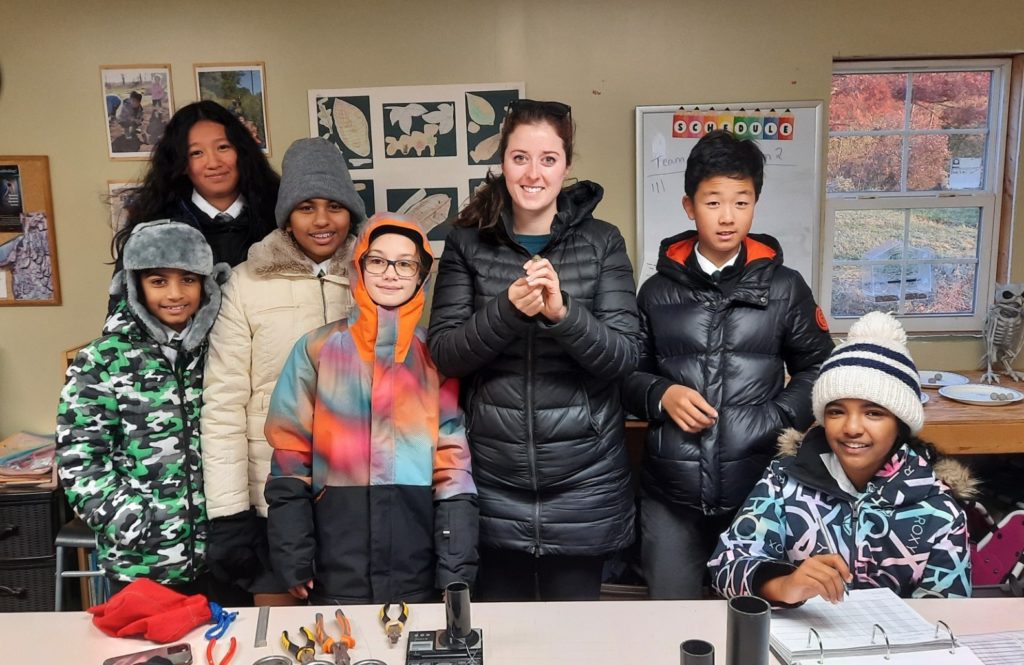
As I’m at the Burlington campus twice a week during the migration, we (teacher Alex Webb and I) decided to pull together a Young Ornithologists Club. We’ve had a really good response and it continues to grow – both in terms of numbers and enthusiasm. We tried owling with the group last night but got skunked. I’m wondering if the traffic noise has something to do with it (as well as the night lights that illuminate the campus – they’re intense!).
Here are the banding totals for Fern Hill:
October 30, Burlington; Banded 20:
1 European Starling
1 Hermit Thrush
5 American Robins (gorging on Buckthorn berries….alas)
11 Dark-eyed Juncos
1 White-throated Sparrow
1 Song Sparrow
November 1, Oakville; Banded 12:
3 Mourning Doves
1 Blue Jay
1 House Sparrow
1 American Goldfinch
2 Dark-eyed Juncos
1 Red-winged Blackbird
3 Northern Cardinals
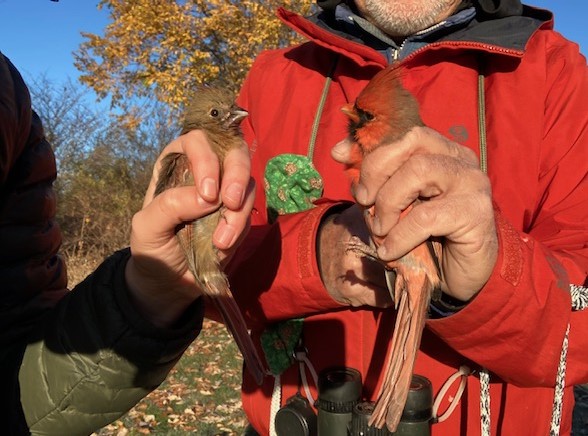
November 2, Burlington; Banded 17:
1 Mourning Dove
2 Black-capped Chickadees
1 Golden-crowned Kinglet
1 Ruby-crowned Kinglet
5 American Robins (gorging on Buckthorn)
6 Dark-eyed Juncos
1 Red-winged blackbird
The Farm continues to be busy! Sparrows zipping in and out of the meadow grass and bouncing between that and the edge. Tuesday (31st) was particularly busy: I filled all the bird bags on the first round. It calmed down somewhat after that but the first hour was ring and fling. Even though the temperature had dropped to below freezing and the nets were frozen and the poles slick with frost, it was a busy morning. Today was milder but very windy to the point that I could only open two nets. There was still a lot of action along the edge-meadow interface though. The sparrows have started to figure out that they should be heading South but there was still lots of activity – I just couldn’t open the nets to sample them. American Tree Sparrows seemed to be around in good numbers.
October 31; Banded 55:
1 Black-capped Chickadee
1 House Finch
3 American Goldfinches
2 Field Sparrows
3 American Tree Sparrows
1 Fox Sparrow
8 Dark-eyed Juncos
1 Savannah Sparrow
4 White-throated Sparrows
23 Song Sparrows
7 Swamp Sparrows
1 Common Yellowthroat
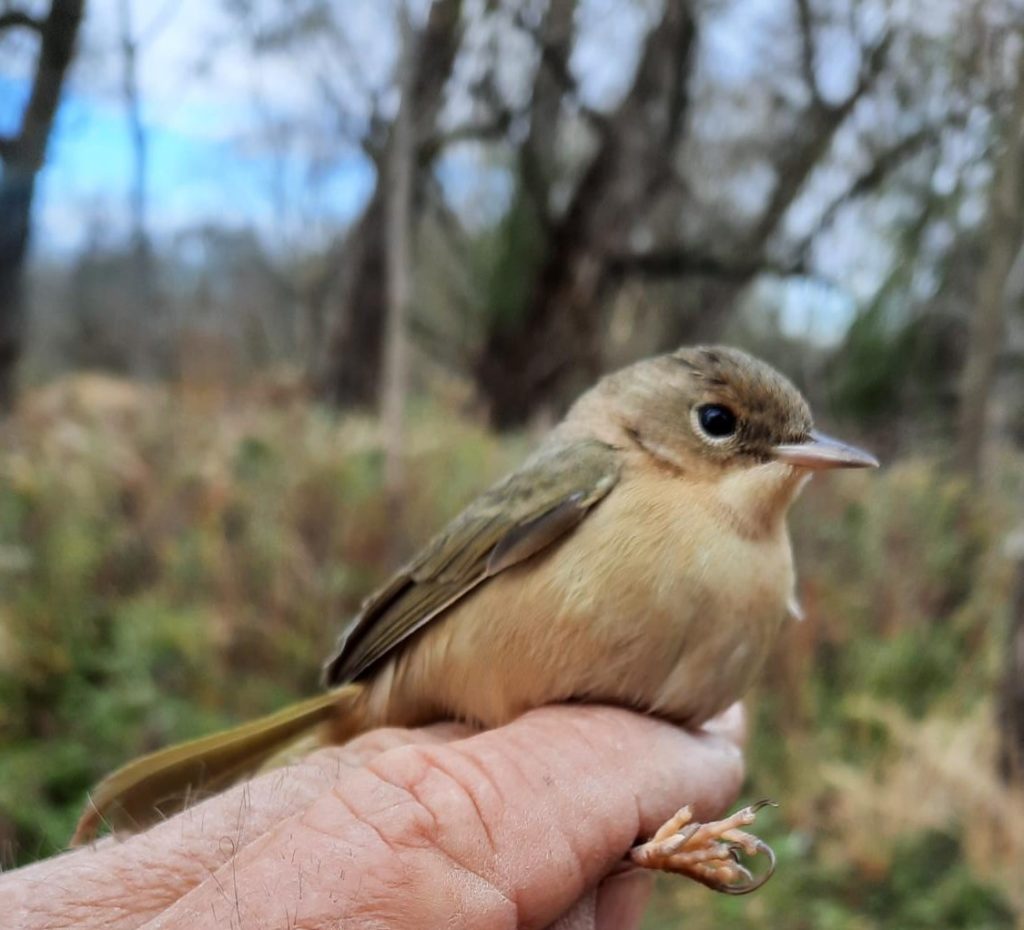
Braving the cold, we were successful catching Northern Saw-whet Owls: 2 on Tuesday night and 4 Wednesday night.
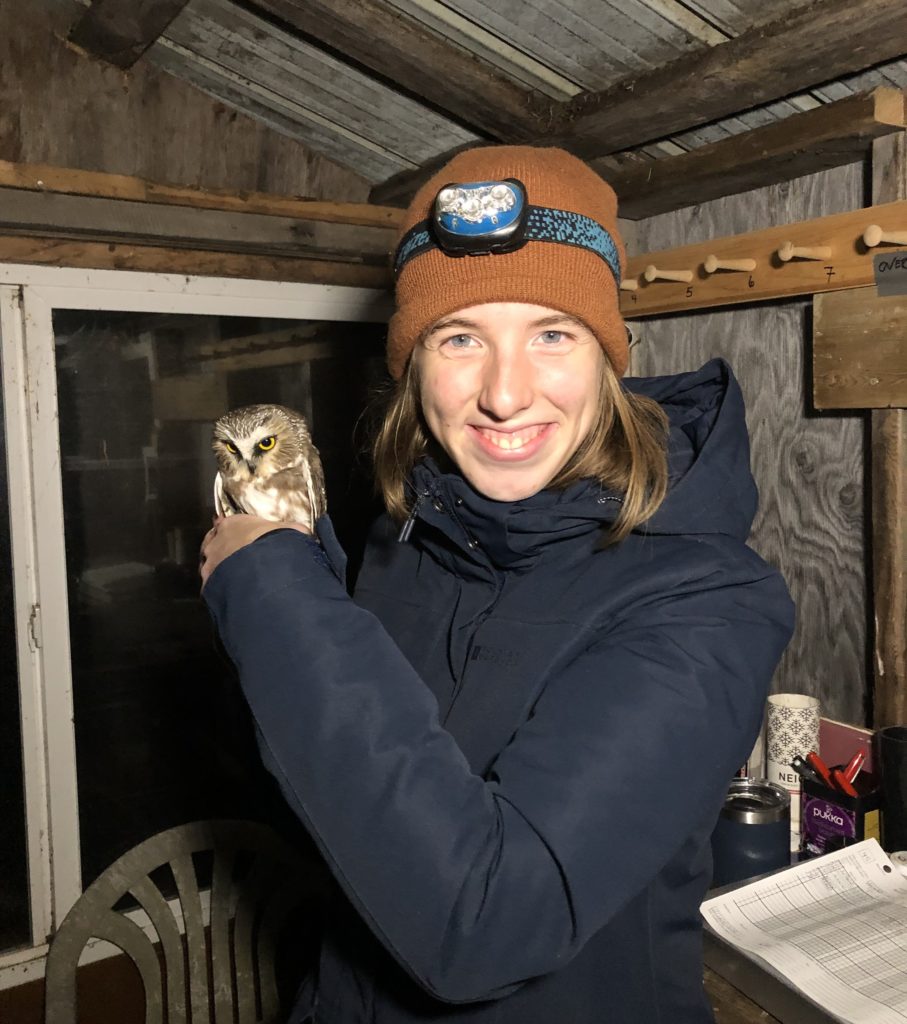
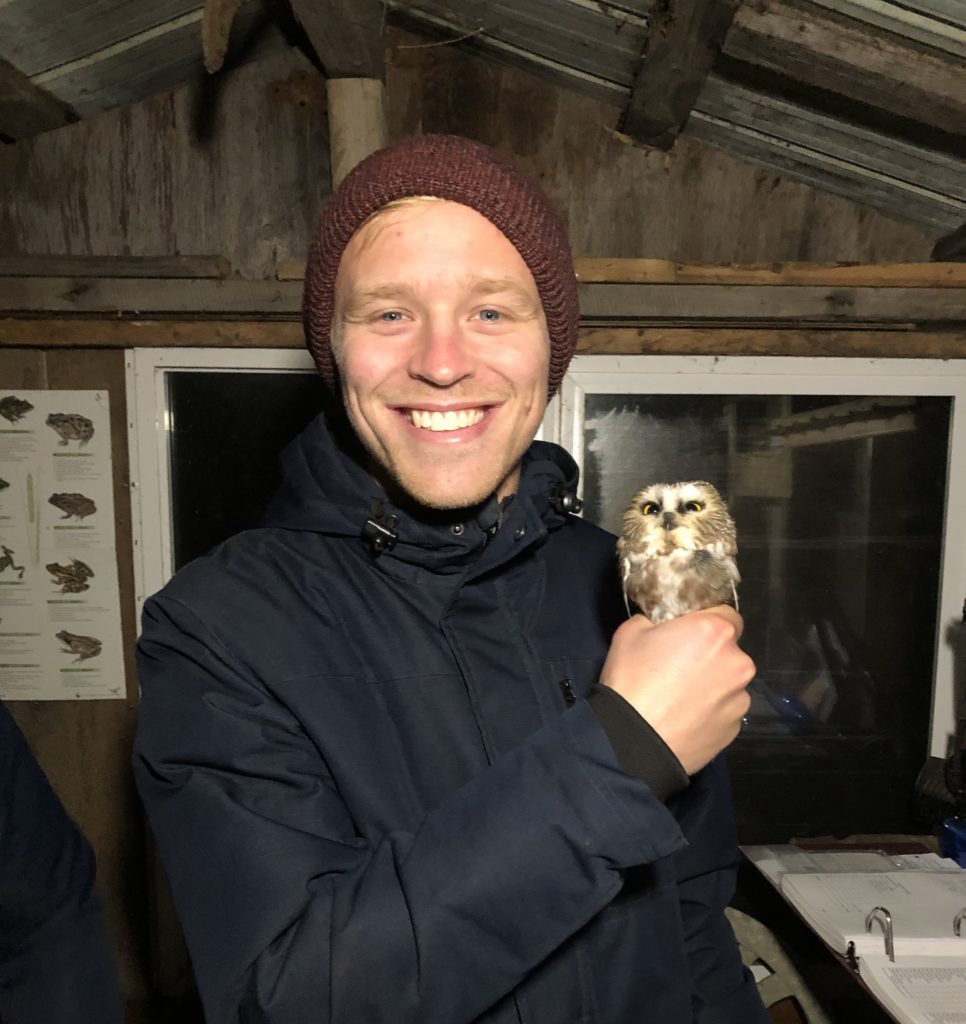
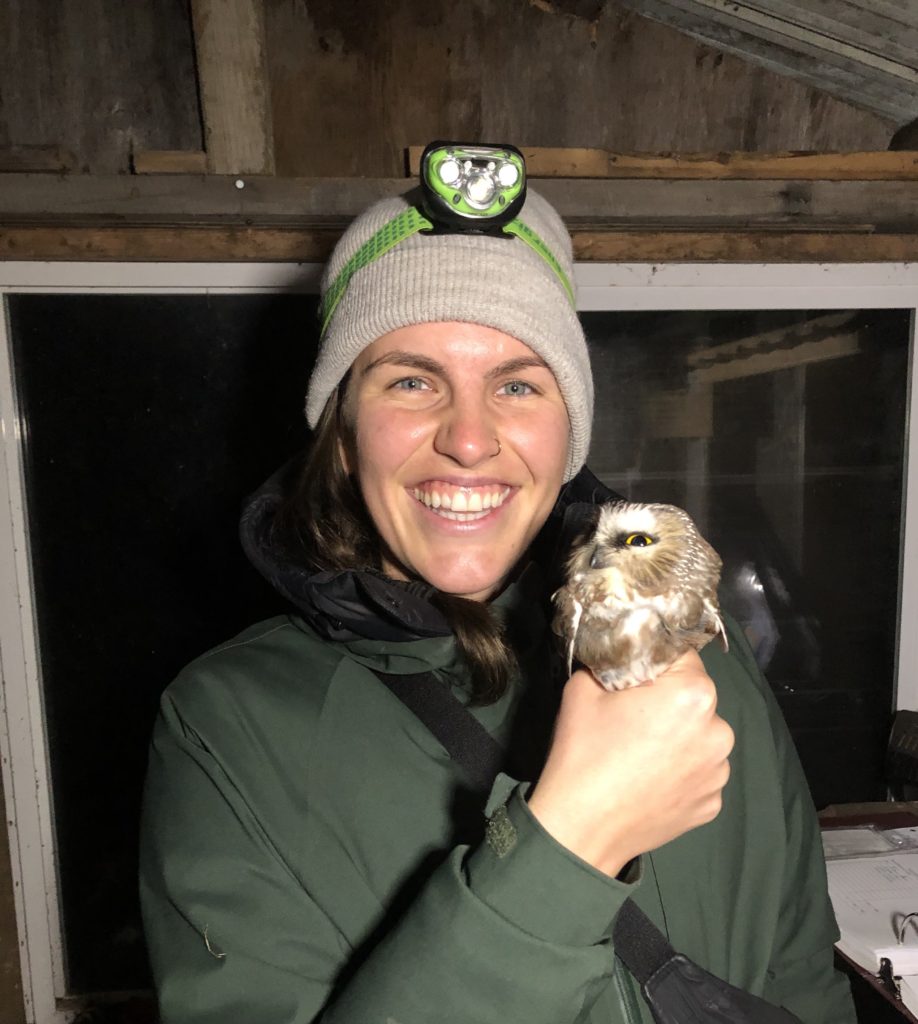
Looking at the above pics….Saw-whet Owls just seem to engender big smiles. They’s be a great mascot for….some cause that needed smiles.
Today I banded 16 birds out of two nets but gave up when even these began to fill with leaves.
1 Eastern Bluebird
2 American Goldfinches
1 Field Sparrow
9 American Tree Sparrows
2 Song Sparrows
1 Swamp Sparrow
Rick
